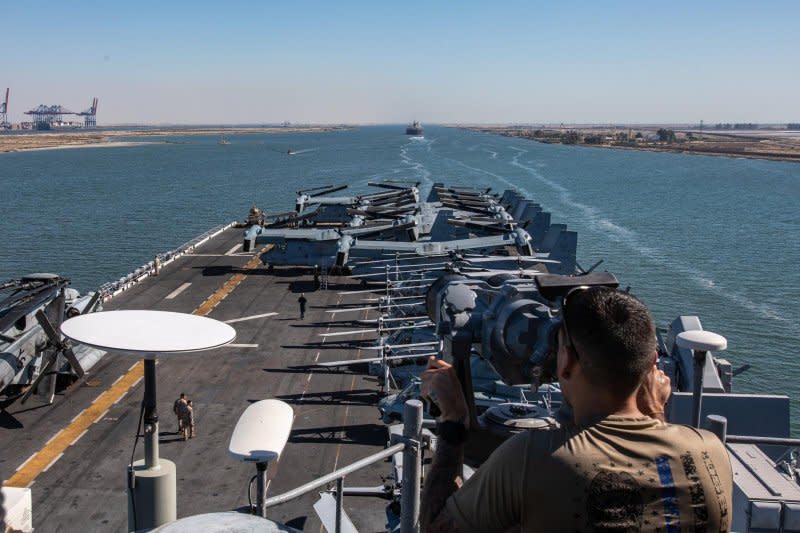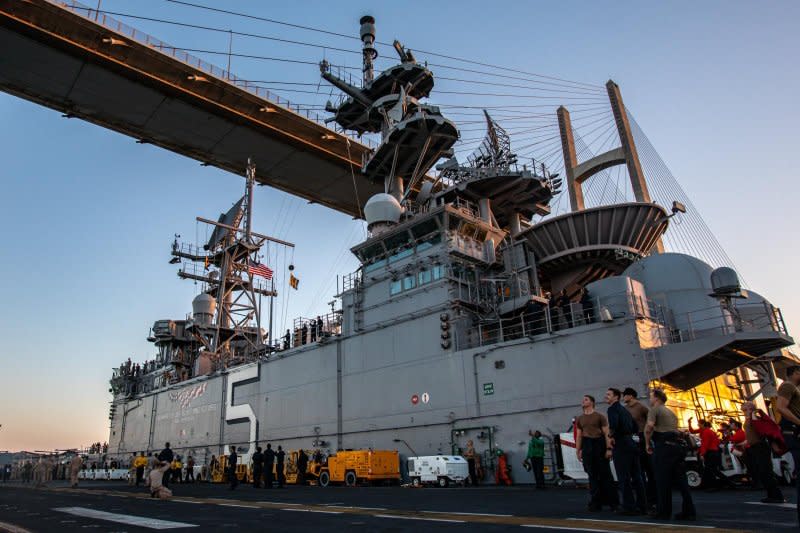Thousands of Marines, additional U.S. warships arrive in Middle East

Aug. 8 (UPI) -- Thousands of Marines and additional U.S. warships have arrived in the Middle East as the American military boosts its presence to counter Iranian aggression in the Strait of Hormuz.
The more than 3,000 U.S. sailors and Marines arrived in the Middle East on Sunday aboard the amphibious assault ship USS Bataan and dock landing ship USS Carter Hall, U.S. Naval Forces Central Command said Monday.
The personnel and equipment of the Bataan Amphibious Ready Group and the 26th Marine Expeditionary Unit deployed to the Middle East under orders of U.S. Defense Secretary Lloyd Austin in what the Pentagon last month said was a demonstration of commitment "to ensuring freedom of navigation and deterring Iranian destabilization activities in the region."
More than 3,000 Sailors & Marines of the Bataan Amphibious Ready Group & 26th Marine Expeditionary Unit arrived in the Middle East, Aug. 6, as part of a pre-announced Department of Defense deployment.
Read more ⬇️https://t.co/H3fokPX1e0 pic.twitter.com/DC7Hpkju9h— U.S. Naval Forces Central Command/U.S. 5th Fleet (@US5thFleet) August 7, 2023
Pentagon press secretary Brig. Gen. Pat Ryder told reporters in a press conference Monday that the United States is coordinating its military presence with regional partners as they work as "a broader coalition" to control commercial shipping lanes.

The deployment was made following recent destabilizing activities committed by Iran in the Gulf that have required intervention by the United States and ally militaries.
Most notably in April, Iran's navy successfully captured a Marshall Islands-flagged oil taker in the Gulf of Oman. In June, the U.S. and British navies responded to a distress call from a merchant ship transiting the Strait of Hormuz that came under harassment from three Iranian fast-attack boats.
And early last month, the U.S. military said it thwarted two attempts by the Iranian navy to seize commercial tankers near Oman.
In the last two years, Iran has attacked, seized or attempted to seize nearly 20 internationally flagged merchant vessels within U.S. Central Command's area of operations, the U.S. military command said last month, describing the instances as "a clear threat to regional maritime security and the global economy."
The deployment was also ordered last month a week after the USS Thomas Hudner and F-35 and F-16 fighter jets were ordered to deploy to the Persian Gulf to counter Iranian attempts to seize oil tankers.
In May, the military increased its rotation of U.S. warships and aircraft patrolling the Strait of Hormuz.
The increased military presence is to aid regional parters in keeping the economic shipping lanes open, Ryder said.
"That's why we've deployed these additional assets, to give us additional options, to speed up timelines, and again, broadly, to ensure stability," he said.

